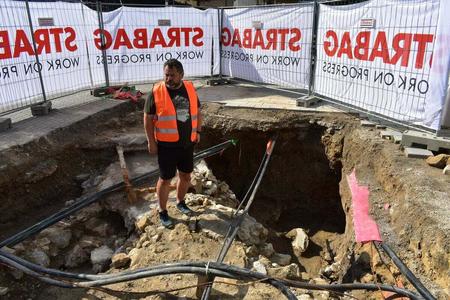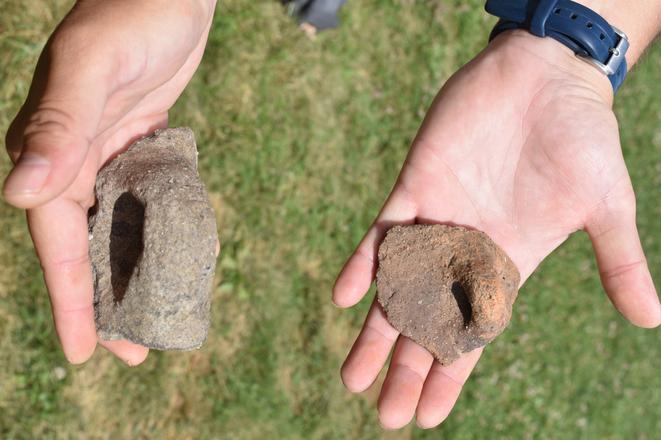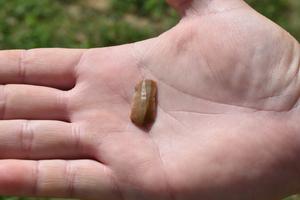Archaeological research suggests that the mineral springs in Dudince, located in south-central Slovakia, were likely utilised by local inhabitants as far back as 6,000 years ago.
Launched last year, exciting research led by Professor Noémi Beljak Pažinová of Constantine the Philosopher University in Nitra continued in the Dudince Spa resort, near the so-called Roman baths, at the start of this summer as well, as reported by the TASR news agency.
The research began with a geophysical survey, which discovered anomalies, potential archaeological objects, at the site.
"Already in the first season, we managed to verify that the anomalies are indeed archaeological objects that correspond to settlement pits, and last year we found out through research that it's a 6,000-year-old settlement," Beljak Pažinová said.
According to her, limestone boulders were found in these objects, which indicates that the settlers at that time knew about the local springs.
The three latest probes uncovered several finds, including imprints of trees and plants in plaster, stone blades from tools; as well as unexpected finds such as a lead bullet from a musket probably from between 17th to 19th century, or a tip from a mediaeval arrow.
Archaeologists also caught a glimpse of a travertine flow, which is a natural precipitation of travertine, a form of terrestrial limestone deposited around mineral springs.
This find also indicates that water was once there and also used.
This season's research, which had lasted 10 days, followed up on the results of the first stage, during which a storage facility was also uncovered. It consisted of a pit approximately 1.7-metre deep and with a bottom diameter of up to two metres, which the settlers used to store food supplies.
During last year's research, a skeleton of a one- to two-year-old child was also found in the pit.
"In the Debrecen laboratory (Hungary, ed.), the precise dating of a child's skeleton and selected animal bones has been accomplished. This reveals that these inhabitants lived in the area approximately 4,300 to 4,100 years before Christ, with a margin of error of about 200 years," said the archaeologist.

This period marks the era of the first metalworkers on the territory of Slovakia, she added. According to her, additional finds such as an obsidian (a natural volcanic glass, ed.) from the Tokaj region in eastern Slovakia, and radiolarite (a rock formed in the ocean, ed.) from western Slovakia, indicate that these settlers had far-reaching trade contacts.


 Fragments of pottery found during the archaeological research at the Dudince Spa site on July 3, 2024. (source: TASR/Jana Vodnáková)
Fragments of pottery found during the archaeological research at the Dudince Spa site on July 3, 2024. (source: TASR/Jana Vodnáková)


